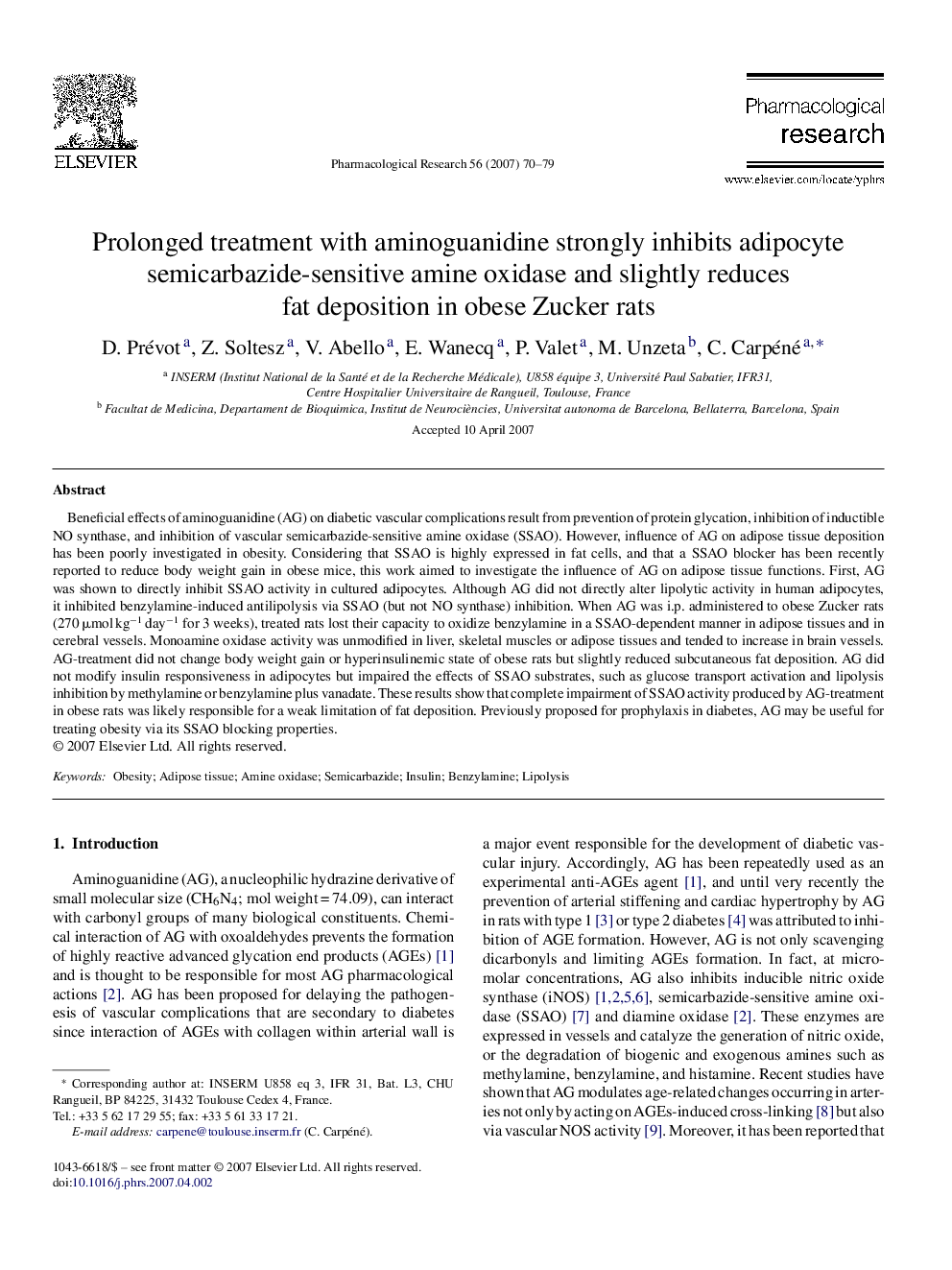| Article ID | Journal | Published Year | Pages | File Type |
|---|---|---|---|---|
| 2562970 | Pharmacological Research | 2007 | 10 Pages |
Beneficial effects of aminoguanidine (AG) on diabetic vascular complications result from prevention of protein glycation, inhibition of inductible NO synthase, and inhibition of vascular semicarbazide-sensitive amine oxidase (SSAO). However, influence of AG on adipose tissue deposition has been poorly investigated in obesity. Considering that SSAO is highly expressed in fat cells, and that a SSAO blocker has been recently reported to reduce body weight gain in obese mice, this work aimed to investigate the influence of AG on adipose tissue functions. First, AG was shown to directly inhibit SSAO activity in cultured adipocytes. Although AG did not directly alter lipolytic activity in human adipocytes, it inhibited benzylamine-induced antilipolysis via SSAO (but not NO synthase) inhibition. When AG was i.p. administered to obese Zucker rats (270 μmol kg−1 day−1 for 3 weeks), treated rats lost their capacity to oxidize benzylamine in a SSAO-dependent manner in adipose tissues and in cerebral vessels. Monoamine oxidase activity was unmodified in liver, skeletal muscles or adipose tissues and tended to increase in brain vessels. AG-treatment did not change body weight gain or hyperinsulinemic state of obese rats but slightly reduced subcutaneous fat deposition. AG did not modify insulin responsiveness in adipocytes but impaired the effects of SSAO substrates, such as glucose transport activation and lipolysis inhibition by methylamine or benzylamine plus vanadate. These results show that complete impairment of SSAO activity produced by AG-treatment in obese rats was likely responsible for a weak limitation of fat deposition. Previously proposed for prophylaxis in diabetes, AG may be useful for treating obesity via its SSAO blocking properties.
